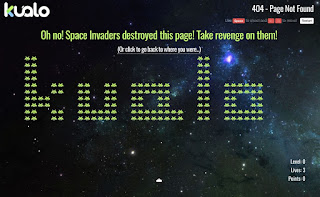Spotlighting Microcopy
The
announcement of the finalists
for this year’s Walkley’s awards may be the first recognition
of microcopy by the mainstream media. In the category of Headline, Caption or
Hook, The Australian
newspaper’s website has been nominated for its cute 404 error pages.
The
pages are little gags about how politicians respond to failure, like former PM
Paul Keating announcing “This is the 404 we had to have.” Then there’s George
Brandis saying “If this is going to be like explaining metadata
to David Speers, kindly count me out.” Over forty randomly generated messages written
in the style of flubbing politicians pop up whenever you hit a page that no
longer exists. Most are penned by Strewth columnist James Jeffrey, who uses these glitches as a chance to splash a few laughs across the website.
 |
| Even Donald Trump gets the chance to point out The Australian's website bugs |
Rather than just a dry 404, this playful content hits a sweet spot with readers as well as award judges. It’s easier to
forgive an error with a smile. Microcopy (the small messages you get on error
pages, button text, loading messages or even thank you emails) is a chance to
craft content that distinguishes you from the rest of the herd. It is the
small stuff worth sweating.
The
Australian isn’t the only organisation investing in its
404 pages. UK-based web host Kualo know their nerdy audience so well that they
embed their 404 page with a Space Invaders mini-game.
 |
| Kualo's 404 page also manages to include their tricky name. |
Probably the best exponents of playful microcopy
are Mailchimp. If you’re setting up an account with Mailchimp and the username
you’ve chosen already exists, you don’t get some dull error message. Instead, you
get: “Another user with this username already exists. Maybe it’s your evil twin.
Spooky.” It gives the basic information with a smile on the side.
You can see this character peppered across the
Mailchimp website, interface and emails, and it works because, rather than being
the domain of just one kooky copywriter, the Mailchimp style guide clearly encourages all staff to
“Write like a human. Don’t be afraid to break a few rules if it makes your
writing more relatable.”
This might sound like a blank cheque for
creativity. It’s not. The voice and tone section of Mailchimp’s style guide
warns against too many jokes or forced humour. Their best caution is “When you’re writing,
consider the reader’s state of mind.” If your user is frustrated by not being
able to find a crucial page in signing up, or is about to make a financial
transaction and needs to trust the site, then now is not the time to break out
the LOLs.
Used judiciously, microcopy can
spark up a website, distinguish its brand and build a better relationship with
users. And that’s worth more than a catchy headline when users are lost.



Comments
Post a Comment